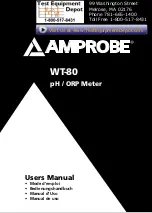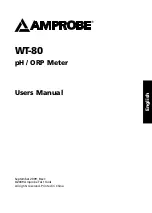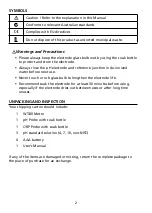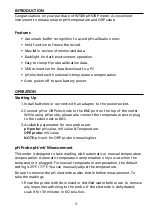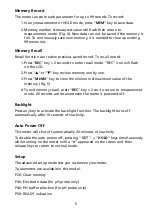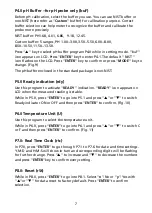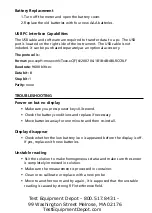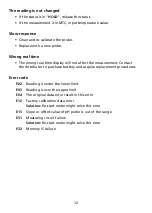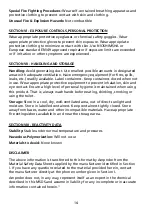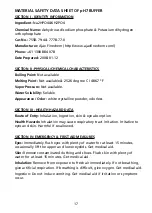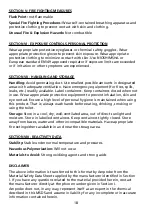
10
Test the electrode:
Connect ORP electrode to meter. Immerse electrode in pH7.00 buffer solution
with saturated quinhydrone. After stirring, mV reading (E1) should be
86±15mV.
Rinse electrode with distilled water, then set it in buffer solution of pH4.01
with saturated quinhydrone. After stabilizing, record mV meter reading (E2).
The difference between E1 and E2 should be around 165mV.
Storage:
Rinse the electrode with distilled water during the interval of each use. Keep
ORP electrode wet in the provided soaking bottle which is filled with soaking
solution.
ORP electrode cleaning:
If sensing element got contaminated, it will result in slow response and
inaccurate reading. Clean it as following:
If contamination is a mineral matter, put sensing element in HCL solution 0.1N
for 10 minutes and then rinse it with distilled water.
If the contamination is oil or grease coating, clean sensing element with
detergent and rinse with distilled water.
After above treatments, put electrode in saturated buffer pH4.01 for 15min
and then rinse with distilled water.
NOTE: After cleaning, soak the electrode in solution for at least 8 hours.
Electrode response time and accuracy:
Sensing element of ORP electrode is made of high purity metal, it truly reflects
the tested solution’s ability of oxidation-reduction. However, slow response
time and inaccurate reading may occur from time to time. The root cause is an
oxidation-reduction coating was formed outside the electrode after long time
using or storage. A simple way to solve this problem is to clean the probe.
Moreover, while the concentration of oxidation-reduction matter is low and
ion exchange rate is slow, they may also cause slow response and inaccurate
reading. Under this condition, it may take 8-24 hours to get a reliable and
correct reading.

